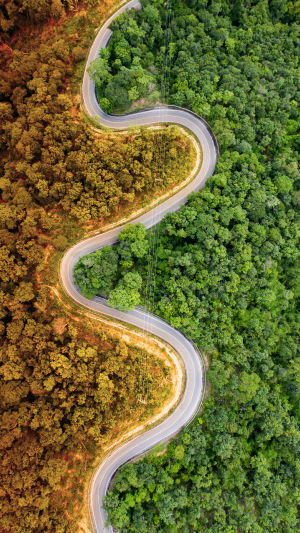Recently, the state of Florida passed the Florida Wildlife Corridor Act.
It means that the wildlife corridor in this area has legal protection.
What is the Wildlife Corridor? Many people are also hearing about this concept for the first time.
As the name suggests, the wildlife corridor is a walkway for wild animals to walk, also called an "ecological corridor", which is mostly a long and narrow area covered by dense vegetation.
An increasingly important ecological corridor
In the past, human intervention in nature was limited, and the habitats of wild animals were distributed in large blocks. The sense of the existence of the ecological corridor is very weak.
Today, all over the world, human activities have had a profound impact on nature.
Except for a few special animals such as raccoons and coyotes, the populations of most animals are declining.
Habitats are severely fragmented, and there is a lack of communication between populations. The phenomenon of inbreeding becomes very common, and in the long run, it is very unfavorable to the development of the population.
At this time, the emergence of ecological corridors is particularly important.
The most direct function of the ecological corridor is to connect the small habitats that were originally isolated and turn them into large habitats.
If multiple types of habitats are connected, a large and complex system including wetlands, forests, lakes, rivers, and other ecosystems will be constructed. This is of great benefit to the balance of the ecosystem, the development of species, and biodiversity.
According to the type, it can be divided into "artificial corridor" and "natural corridor".
Florida is rich in wildlife, with the famous cougars, black bears, otters, alligators, and more.
Most wildlife habitats have been destroyed due to human activities.
In the past, people protected animals and protected habitats. But they don't know that island-like habitats are a great hidden danger to species diversity.
With the passage of time, there is no communication between different populations for a long time, and inbreeding is serious and declines.
Wildlife corridors play a key role at this moment.
Types of wildlife corridors
Naturally formed wildlife corridors are called natural corridors.
For example, China's river corridor, spanning Nepal and India, is more than 900 kilometers long and is the world's largest natural corridor "Terai Arc Landscape".
These are naturally formed and are the most important wildlife corridors.
Artificially built facilities for wild animals to pass through are called artificial corridors.
For example, the Wildlife Bridge in Banff National Park in Canada, and the crab tunnel in Christmas Island in Australia.
From the main structure and function, the ecological corridors on the earth can be divided into three types: river corridors, linear ecological corridors, and belt ecological corridors.
After entering the 19th century, human beings destroyed the environment and hunted without restraint, and wild animals disappeared faster than in the past, posing a threat to the diversity of species on the earth.
Later, as people's awareness of environmental protection and animal protection continued to increase. The living conditions of wild animals have improved, but the environment has been destroyed and the habitats are scattered, which is difficult to restore in a short period of time.
Restoration and construction of ecological corridors are currently the most effective means of restoring severely fragmented habitats.
There are currently two main methods:
1. Repair and improve the existing natural corridors
2. Man-made ecological corridors, such as overpasses for wild animals to walk on some roads that cross the reserve.
Ecological corridors are not only corridors for wild animals, but also their homes. It is a great practice to vigorously protect ecological corridors in order to achieve the purpose of protecting wild animals!





